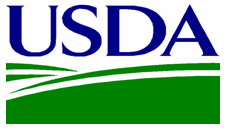Here in Vermont, from 2007 to 2012 the number of sheep farms increased 27%, and the number of sheep increased by 35%. However, for a variety of reasons, many sheep farmers have struggled to turn a profit. At the same time, growing interest in natural non-toxic materials for multiple purposes, including insulation, upholstery and other home and garden uses, could provide a market for raw wool that is as much a part of sheep farming as are meat and milk. A number of these items are already produced in Europe and in the western United States.

The farm fiber field that includes wool, milkweed, hemp and flax is a growth area as farmers and researchers look for better substitutes for fossil-fuel-based, non-renewable fabrics and building materials. There's an exciting opportunity to find solutions that support farmers while also addressing both the climate crisis and the micro-plastic crisis affecting all life on earth.
Wool

Sheep must be sheared regularly in order to remain healthy, but there is not a ready market for the wool that is collected. This has meant that farmers often store bags and bags of the wool in their barns, accumulating a product that doesn't have a place to go.
Kimberly Hagen of the Center's Pasture Program (and herself a long-time sheep farmer) became aware that in other places, including Europe and the western US, enterprising farmers and interested partners in the building trades were turning wool into building insulation. Suzy Hodgson, the Center's Sustainable Agriculture Outreach Specialist, also saw the intrinsic properties of Vermont wool as a possible energy efficient and renewable home material.
In fall 2016, with funding from a USDA Rural Development grant in place and support from the Vermont Agency of Agriculture, Food and Markets, the team announced a one-year feasibility study with the purpose of learning whether this is a possible fit for the needs of Vermont's shepherds and its green building trade. The project started in January, 2017 and concluded in 2019 with community presentations about the development of Vermont wool pellets as a soil amendment.
In 2020 we began planning the next phases of the project, which - with funding - will include both an in-depth research on how the pellets affect productivity, water, and soil chemistry and structure, and also a pilot to determine the actual costs and requirements of at-scale production of the pellets using Vermont wool. (Here is some of the information we're sharing about the project (PDF), and we also invite you to visit here if you're interested in supporting this exciting work.) Though the pandemic has presented logistical challenges, the team is excited to move ahead with research and with developing the pellet product with locally sourced wool.
If you are interested in supporting the project, learning more, or finding ways to get involved, please get in touch any time or click right below to read about current findings and approaches.
Wool Pellet Fertilizer: Early Findings, Looking Ahead (2022) (PDF)
Wool Pellet Fertilizer: Early Findings, Looking Ahead - Poster (2022) (PDF)
Wool Project Findings & Reports

- Here is a short video update that we prepared as part of the Center's 2020 Annual Report.
Findings were extremely exciting to both vegetable farmers and livestock producers, with promising implications for water quality and soil health as well. With funding, the work will continue in 2020 with in-depth field trials with different vegetables and also an at-scale test of the production of pellets from wool from the region.
Project updates January 2021:
- We met our crowdfunding goal to help us do a test run of bringing a truckload of Vermont wool across the Canadian border to a Quebec factory where they can be pelletized - as soon as public health conditions allow travel from Vermont into Canada!
- The team is working on the farm-field design for the research itself so we will be able to measure and analyze what actually happens to plant and soil health when wool pellets are applied.
- We're adding a third (Connecticut River Valley) vegetable farm to the project, which will let us see how the pellets work on additional soil types.
Moving ahead in 2022:
Wool Pellet Fertilizer: Early Findings, Looking Ahead (2022) (PDF file)
Wool Pellet Fertilizer: Early Findings, Looking Ahead - Poster (2022) (PDF file)
Milkweed

Center for Sustainable Ag. personnel, along with other UVM Extension colleagues, have been exploring the potential for milkweed as a commercial crop that also provides well-documented ecosystem services.
In 2019, Suzy Hodgson, along with VT-NRCS partners, investigated and ![]() shared findings about potential income and other benefits from milkweed as a crop.
shared findings about potential income and other benefits from milkweed as a crop.
Vermont Wool Project Team
- Deb and Ed Bratton
Vermont Fiber Mill
- Alex DePillis
Vermont Agency of Agriculture, Food and Markets
- Anna Freund
Open View Farm
- Ben Graham
New Frameworks
- Dave Martin
Settlement Farm
- Andrea Murray
Vermont Integrated Architecture
- David Ritchie
Green Mountain Spinnery
- Alex Wilson
Building Green
Interested in knowing more about the Center's work or seeking additional information? Contact Extension via the short form on this page and one of our colleagues will help get you the resources you need.






